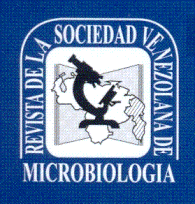Determinación de la resistencia a meticilina y eritromicina de cepas de Staphylococcus aureus aisladas en un hospital del estado Zulia
Palabras clave:
Staphylococcus aureus, resistencia fenotípica y genotípica, meticilina, eritromicina, phenotypic and genotypic, methicillin, erythromycinResumen
Resumen: Staphylococcus aureus resistente a meticilina (SARM) está asociado a diversos procesos infecciosos y su creciente resistencia representa un grave problema de salud publica. Los objetivos de este trabajo fueron: detectar fenotípica y genotípicamente la resistencia a meticilina y eritromicina en 60 cepas SARM y confirmar la resistencia a meticilina. Ésta última fue confirmada por concentración inhibitoria mínima (CIM), prueba de descarte, resistencia a cefoxitina (FOX), detección de PBP2a, producción de β-lactamasa y detección del gen mecA (PCR). Para la resistencia a eritromicina se utilizó el método de difusión en disco, CIM, resistencia inducible a clindamicina (D-test) y detección de los genes ermA, ermB, ermC y msrA (PCR). Los métodos de CIM, descarte, FOX y PBP2a, mostraron en cada prueba una sensibilidad y valor predictivo de 100% y 98,3% respectivamente. Una cepa fue mecA negativo, negativa para PBP2a y β-lactamasa positiva y se consideró “borderline”. Treinta y cinco (58,3%) SARM fueron resistentes a eritromicina y mostraron los fenotipos MSB (6/17,1%), cMLSB (25/71,4%) y iMLSB (4/11,4%), siendo estas últimas D-test positivo. El gen ermA fue el más frecuente. La resistencia a eritromicina encontrada constituye un problema serio, por ser una de las alternativas para su tratamiento.
Determination of methicillin and erythromycin resistance of Staphylococcus aureus strains isolated at a hospital in Zulia State
Abstract: Methicillin resistant Staphylococcus aureus strains (MRSA) are associated to diverse infectious processes and their growing resistance represents a serious public health problem. The objectives of this study were to detect methicillin and erythromycin resistance of 60 MRSA strains phenotypically and genotypically, and confirm methicillin resistance. This last one was confirmed by the minimal inhibitory concentration (MIC) method, screening test, cefoxitin resistance (FOX), PBP2a detection, β-lactamase production, and mecA gene detection (PCR). For erythromycin resistance, the disk diffusion method, MIC, inducible clindamycin resistance (D-test), and ermA, ermB, ermC, and msrA gene detection (PCR) were used The MIC, discard test, FOX, and PBP2a methods showed in each test a sensitivity and predictive value of 100% and 98% respectively. One strain was mecA negative, PBP2a negative, and β-lactamase positive and it was considered “borderline”. Thirty five (58.3%) were erythromycin resistant and showed MSB (6/17.1%), eML.SB (25/71.4%) and iML.SB (4/11.4%); these last ones were D-test positive. ermA gene was the most frequent. The erythromycin resistance found contitutes a serious problem since it is one of the treatment alternatives.






